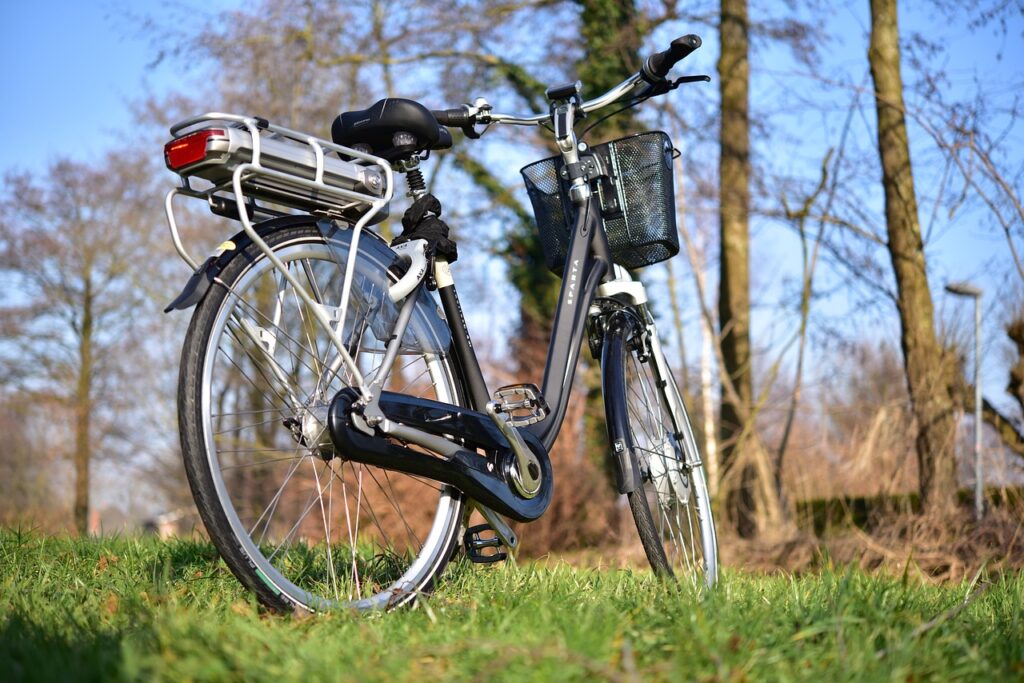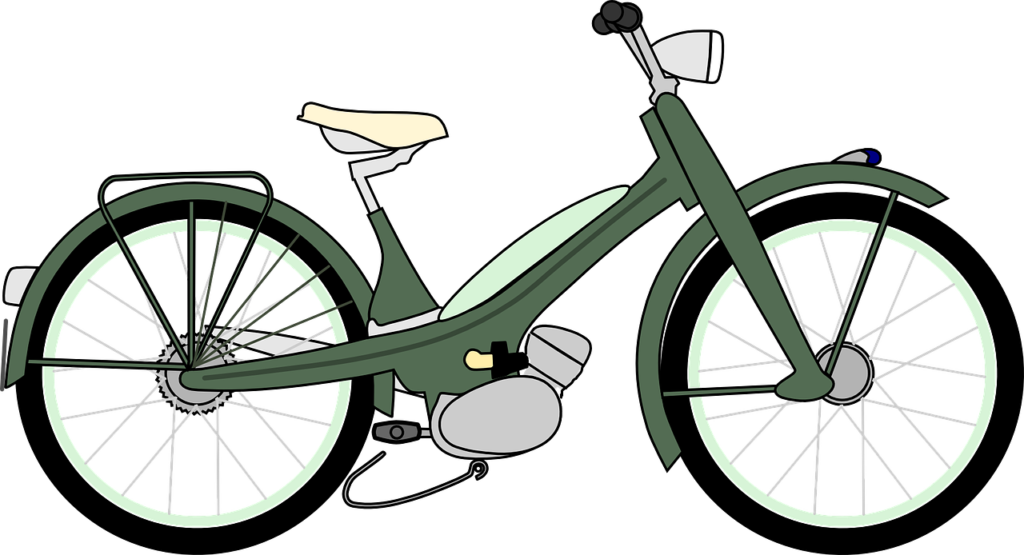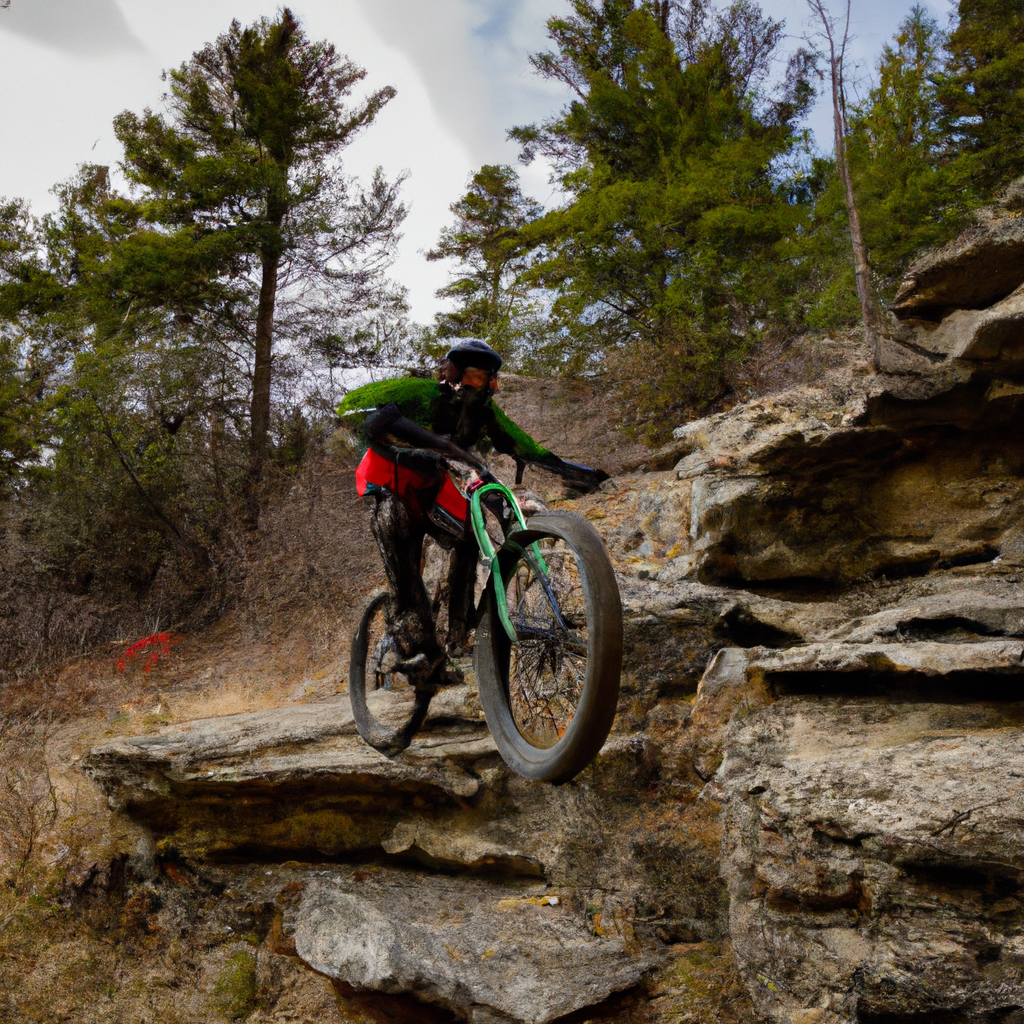Hey there, E-Bike enthusiasts! Welcome to our “Advanced E-Bike Riding Tips” section, a dedicated space for riders who are ready to go beyond the basics. In this article, we will be exploring the essential trail riding skills that will help you navigate varied terrain on your E-Bike. Whether you’re an intermediate rider looking to enhance your off-road abilities or an advanced rider seeking to master the art of conquering challenging trails, this guide is for you. From handling tight corners and steep descents to maneuvering rocky terrain and sandy paths, we will provide you with expert insights and techniques to confidently tackle any type of trail on your E-Bike. So, buckle up and get ready to take your off-road adventures to the next level!

1. Choosing the Right E-Bike for Trail Riding
Trail riding on an e-bike is an exhilarating experience that allows you to explore the great outdoors while enjoying the benefits of electric power. To ensure a smooth and enjoyable ride, it’s important to choose the right e-bike for trail riding. Here are some factors to consider when selecting your e-bike:
Consider the bike’s suspension
When it comes to trail riding, having a bike with good suspension is essential. Suspension helps absorb the impact of rough terrain, providing a smoother and more comfortable ride. Look for e-bikes with either front suspension forks or full suspension systems, depending on the type of trails you plan to ride. Front suspension forks are ideal for cross country trails, while full suspension systems are better suited for more technical and challenging terrain.
Look for a powerful motor
Another important consideration is the motor of the e-bike. A powerful motor will provide you with the necessary assistance to tackle steep and challenging climbs. Look for e-bikes with motors that have high torque and wattage ratings. This will ensure that you have enough power to conquer even the toughest trails.
Consider the battery capacity
The battery capacity of your e-bike is crucial for longer rides. Trail riding can be demanding on the battery, especially when you’re using high levels of assistance. A larger battery capacity will give you a longer range and allow you to explore more trails without worrying about running out of power. Look for e-bikes with higher amp-hour ratings to ensure a sufficient battery capacity for your trail riding adventures.
Ensure the bike has suitable tires
Tires play a significant role in e-bike performance on the trails. Wide and knobby tires provide better traction and stability, allowing you to navigate through various types of terrain with ease. Look for e-bikes with tires that have aggressive tread patterns, tubeless compatibility, and durable construction. These features will enhance your grip and reduce the risk of punctures on the trails.
Test ride different models
Finally, before making a final decision, it’s important to test ride different e-bike models. Each brand and model may have its own unique features and characteristics that can significantly impact your riding experience. By test riding different e-bikes, you’ll be able to determine which one feels the most comfortable and suits your riding style the best. Don’t be afraid to ask questions and seek advice from experienced riders or bike shop professionals during your test rides.
2. Understanding Trail Terrain
To navigate varied terrain on an e-bike, it’s crucial to have a good understanding of the different types of trails and how they can impact your e-bike’s performance. Here are some key points to consider when it comes to trail terrain:
Learn about different types of trails
Trails can vary significantly in terms of their difficulty level and terrain features. It’s important to familiarize yourself with the different types of trails available in your area and understand their characteristics. This will help you plan your rides accordingly and choose trails that match your skill level and riding preferences.
Understand the impact of terrain on e-bike performance
Different types of terrain can have a significant impact on your e-bike’s performance. For example, riding on a smooth and flat trail will require less effort from the motor and battery compared to riding on steep and technical terrain. Understanding how different terrains can affect your e-bike’s power consumption and performance will help you better manage your battery life and plan your rides more efficiently.
Recognize the challenges posed by various terrain features
Trails often have a variety of terrain features such as rocks, roots, jumps, drops, and tight corners. Each of these features presents its own set of challenges and requires specific riding techniques. By recognizing and understanding these challenges, you’ll be better prepared to navigate through them safely and confidently.
Familiarize yourself with common trail obstacles
Obstacles such as fallen logs, water crossings, and rock gardens are common on many trails. It’s important to familiarize yourself with these obstacles and learn the techniques required to overcome them. Knowing how to approach and handle these obstacles will improve your overall trail riding skills and allow you to navigate through them with ease.
3. Mastering E-Bike Handling Techniques
Mastering e-bike handling techniques is essential for safe and enjoyable trail riding. Here are some techniques that will help you improve your e-bike handling skills:
Developing a balanced riding position
Maintaining a balanced riding position is key to having control and stability on your e-bike. Keep your knees slightly bent, your weight centered over the bike, and your arms relaxed. This will allow you to easily absorb shocks and bumps, helping you maintain control on rough terrain.
Improving your bike control skills
Having good bike control skills will significantly enhance your trail riding experience. Practice techniques such as riding in a straight line, navigating tight turns, and performing controlled descents. The more you practice these skills, the more comfortable and confident you will become on your e-bike.
Learning to distribute your weight effectively
Proper weight distribution is crucial when it comes to tackling different trail features. For example, when climbing steep hills, shift your weight forward to maintain traction on your front wheel. On the other hand, when descending, shift your weight back to improve stability and control. Learning to distribute your weight effectively will make a noticeable difference in your ability to handle various terrains.
Practicing cornering techniques
Cornering on an e-bike requires a combination of technique and confidence. Practice leaning your bike into corners, looking ahead, and anticipating the trajectory of the trail. By mastering cornering techniques, you’ll be able to navigate through tight turns with precision and maintain your speed and momentum.
Mastering braking techniques for different terrain
Braking is an essential skill for trail riding, especially when it comes to controlling your speed and navigating technical sections. Practice modulating your brakes to achieve the right balance between slowing down and maintaining traction. In addition, learn how to brake effectively on different types of terrain, such as loose gravel or wet surfaces, to ensure maximum control and safety.
4. Uphill Riding Strategies
Uphill riding can be challenging, but with the right strategies, you can conquer any climb with confidence. Here are some strategies to help you tackle uphill sections on your e-bike:
Understanding pedal-assist levels
Most e-bikes come with different pedal-assist levels that provide varying degrees of assistance based on the terrain and your desired effort level. Familiarize yourself with the pedal-assist levels on your e-bike and learn how to use them effectively. Use a higher pedal-assist level on steep climbs to conserve energy and maintain a steady pace.
Choosing the right gear
Gear selection plays a crucial role when climbing uphill on your e-bike. Shift into a low gear before you start the climb to make it easier to pedal and maintain a consistent cadence. The right gear will depend on the steepness of the climb and your riding style, so experiment with different gear combinations to find what works best for you.
Applying proper body position
Maintaining the right body position when climbing uphill is essential for efficiency and control. Shift your weight forward and keep your upper body relaxed while staying seated. This will help you maintain traction on your front wheel and prevent wheel slip on steep gradients.
Maintaining a steady pedal cadence
A steady pedal cadence is crucial when climbing uphill on an e-bike. Aim for a cadence between 70-90 revolutions per minute (RPM) to optimize your pedal stroke and maximize power delivery. Avoid mashing the pedals or spinning too fast, as it can waste energy and reduce your overall climbing efficiency.
Using effective climbing techniques
When climbing uphill, it’s important to use proper climbing techniques to conserve energy and maintain momentum. Use a zigzag or serpentine technique to take advantage of switchbacks and reduce the steepness of the climb. Additionally, consider using your body weight to help you generate power and maintain control, such as leaning forward and pushing down on the handlebars when climbing.

5. Descending with Confidence
Descending on an e-bike can be an exhilarating experience, but it’s essential to have the right skills and techniques to do it safely and confidently. Here are some tips for descending on your e-bike:
Maintaining a relaxed body position
When descending on your e-bike, it’s crucial to maintain a relaxed body position. Keep your knees and elbows slightly bent, and your weight centered over the bike. This will help you absorb bumps and maintain control of your e-bike on rough terrain.
Choosing the right line
Choosing the correct line is essential when descending on an e-bike. Look ahead and anticipate the trail to pick the smoothest and safest path. Avoid loose rocks, deep ruts, or other obstacles that can cause your e-bike to lose traction or become unstable.
Using appropriate braking techniques
Braking is crucial when descending on an e-bike to control your speed and maintain safety. Use both your front and rear brakes, applying them gradually to avoid skidding or losing control. Shift your body weight back to prevent your front wheel from locking up and maintain stability.
Managing speed and momentum
Maintaining a suitable speed and managing momentum is crucial when descending on an e-bike. Use your brakes to control your speed, but also consider using gravity to your advantage. By managing your speed and momentum, you can maintain control and navigate through descents more effectively.
Navigating switchbacks on downhill descents
Switchbacks can be challenging to navigate on a downhill descent, but with the right technique, you can conquer them safely. Look ahead and plan your line through the switchback. Use your body positioning to shift your weight and control the bike’s movement as you navigate the tight turns.
6. Handling Rough and Rocky Terrain
Riding on rough and rocky terrain requires a combination of skill and technique to maintain control and balance. Here are some strategies to help you handle rough and rocky terrain on your e-bike:
Understanding how suspension works
Understanding how your e-bike’s suspension works is crucial when riding on rough and rocky terrain. Suspension helps absorb shocks and bumps, providing a smoother ride and maintaining traction. Adjust your suspension settings to match the terrain you’ll be riding on, and learn how to effectively use your suspension to improve control and comfort.
Choosing the right tire pressure
Tire pressure plays a significant role when riding on rough and rocky terrain. Lower tire pressure provides more grip and traction, allowing the tires to conform to the uneven surface. Experiment with different tire pressures to find the right balance between grip and rolling resistance for the specific terrain you’ll be riding on.
Navigating rock gardens and technical sections
Rock gardens and technical sections can be challenging to navigate, but with the right technique, you can tackle them with confidence. Look ahead and choose your line through the rocks, aiming for the smoothest and most stable path. Use your suspension and body positioning to absorb impacts and maintain control over your e-bike.
Maintaining momentum over rough terrain
Maintaining momentum is crucial when riding on rough and rocky terrain. Pedal consistently and smoothly to carry your momentum through obstacles and challenging sections. Avoid sudden changes in speed or excessive braking, as it can cause loss of traction and make it more difficult to navigate through rough terrain.
Using body positioning to absorb impact
Your body positioning plays a significant role in absorbing impacts and maintaining control when riding on rough and rocky terrain. Keep your knees and elbows slightly bent, allowing your body to act as a shock absorber. Shift your weight back and use your arms to absorb impacts and maintain stability over uneven surfaces.

7. Riding Sand and Loose Surfaces
Riding on sand and loose surfaces can present unique challenges, but with the right technique and approach, you can enjoy the experience. Here are some tips for riding on sand and loose surfaces:
Lowering tire pressure for improved traction
Lowering your tire pressure is crucial when riding on sand and loose surfaces. It increases the contact patch of the tires, providing better traction and stability. Experiment with different tire pressures to find the right balance between grip and rolling resistance for the specific surface you’ll be riding on.
Finding the right balance between speed and control
Maintaining the right balance between speed and control is essential when riding on sand and loose surfaces. Slow down and modulate your speed to prevent your e-bike from sinking or losing traction in soft sand or loose gravel. Riding too fast can lead to loss of control, while riding too slow can cause you to lose momentum.
Using technique to maintain stability on loose surfaces
Maintaining stability on loose surfaces requires specific techniques. Lean back slightly and keep your weight centered over the bike to maintain traction on the rear wheel. Avoid sudden acceleration or braking, as it can cause your tires to lose grip. Instead, pedal smoothly and use gradual braking to control your speed.
Avoiding common pitfalls when riding on sand
When riding on sand, there are a few common pitfalls to avoid. Stay clear of deep or soft sand, as it can cause your e-bike to sink or become unstable. Look for firmer sections of sand to ride on and avoid riding in the tracks of other vehicles, as they can be uneven and difficult to navigate.
8. Crossing Water Features
Crossing water features on your e-bike can be a thrilling experience, but it requires careful consideration and technique. Here are some tips for crossing water features safely:
Evaluating the depth and flow of water
Before crossing any water feature, take the time to evaluate the depth and flow of the water. Avoid crossing deep or fast-flowing water, as it can be hazardous and potentially damage your e-bike. Look for shallow sections and calm flows that will allow for a safe and enjoyable crossing.
Determining the best line to navigate through water
Choose the best line to navigate through the water feature by looking for the shallowest and most stable path. Avoid areas with submerged obstacles or soft sediment that can cause your e-bike to sink or become stuck. Take your time to carefully plan your line before crossing.
Protecting e-bike components from water damage
Protecting your e-bike components from water damage is crucial when crossing water features. Start by ensuring that your e-bike has adequate water resistance and is designed for off-road or wet riding conditions. Additionally, consider using waterproof bags or covers to protect sensitive components such as the battery, motor, and electronics.
Maintaining balance and control in wet conditions
Maintaining balance and control in wet conditions requires proper technique and body positioning. Keep your weight centered over the bike and your body relaxed. Avoid sudden movements or excessive braking, as it can cause loss of traction or loss of control. Control your speed and navigate through the water feature smoothly and confidently.

9. Negotiating Technical Obstacles
Technical obstacles such as logs and roots can present challenges on the trail, but with the right techniques, you can navigate them with ease. Here are some tips for negotiating technical obstacles:
Understanding the techniques for tackling logs and roots
Tackling logs and roots requires proper technique and timing. Approach the obstacle with enough speed and momentum to carry you over it. Lift your front wheel slightly by pulling up on the handlebars as you reach the obstacle, and then shift your weight forward to lift your rear wheel. Practice this technique to build confidence and improve your ability to navigate over logs and roots.
Employing body position to maneuver over obstacles
Proper body positioning is essential when maneuvering over obstacles. Keep your body relaxed and centered over the bike. As you approach an obstacle, shift your weight back and lift your front wheel slightly. Use your arms and legs to help guide the bike over the obstacle, maintaining control and balance throughout the maneuver.
Using momentum to overcome technical challenges
Momentum is key when it comes to overcoming technical challenges. Maintain a steady pace and avoid coming to a complete stop before attempting to tackle an obstacle. Sufficient momentum will help you carry over the obstacle smoothly and reduce the risk of getting stuck or losing control.
Applying the right amount of power and finesse
Applying the right amount of power and finesse is crucial when negotiating technical obstacles. Avoid applying excessive power or force, as it can cause you to lose control or damage the obstacle. Instead, focus on applying consistent and controlled power while maintaining a smooth and steady approach.
10. Safety Considerations for Trail Riding
Ensuring your safety and the safety of others is of utmost importance when trail riding. Here are some safety considerations to keep in mind:
Wearing appropriate safety gear
Always wear appropriate safety gear when trail riding. This includes a helmet, gloves, knee and elbow pads, and suitable footwear. Safety gear will help protect you in the event of a fall or collision and minimize the risk of injury.
Inspecting and maintaining your e-bike
Regularly inspect and maintain your e-bike to ensure it’s in safe working condition. Check the brakes, tires, suspension, and any other components to make sure they’re functioning properly. Keep your e-bike clean and lubricated, and address any issues or concerns promptly.
Riding within your skill level
Be honest with yourself about your riding abilities and stay within your skill level. Pushing yourself too far beyond your comfort zone can lead to accidents and injuries. Gradually progress and challenge yourself, but always prioritize safety.
Knowing emergency procedures
Familiarize yourself with emergency procedures in case of an accident or injury. Know how to contact emergency services and have a basic understanding of first aid. Consider taking a first aid course to enhance your preparedness on the trails.
Considering the environmental impact of trail riding
Respect the environment and trail etiquette when riding. Stay on designated trails and avoid damaging vegetation and wildlife habitats. Pack out any trash and leave the trails better than you found them. By being responsible trail riders, we can help preserve and protect our natural landscapes for years to come.
In conclusion, trail riding on an e-bike is an exciting and rewarding experience that requires a combination of skills, techniques, and the right equipment. By choosing the right e-bike, understanding trail terrain, mastering handling techniques, and prioritizing safety, you’ll be able to navigate varied terrain with confidence and enjoyment. So get out there, explore the trails, and elevate your e-bike riding skills!




